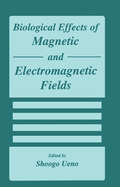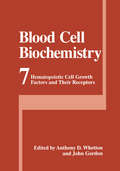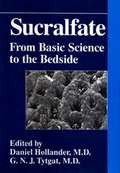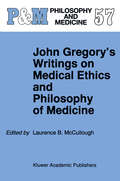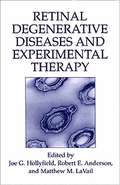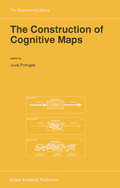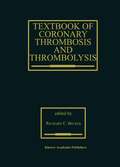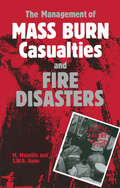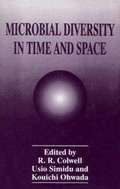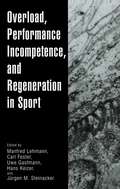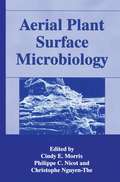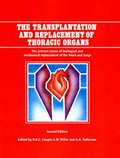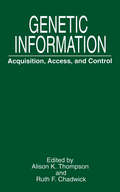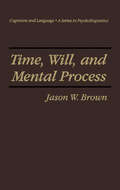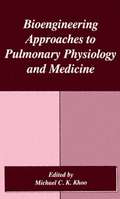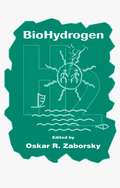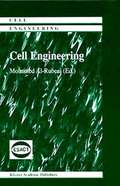- Table View
- List View
Biological Effects of Magnetic and Electromagnetic Fields
by Shoogo UenoThe International Symposium on Biological Effects of Magnetic and Electrom- netic Fields was held from September 3-4, 1993 at Kyushu University in Fukuoka . Japan . Originally, it was only intended to be an informal gathering of many scientists who had accepted my invitation to visit Kyushu University after the XXIVth General Assembly of the International Union of Radio Science (URSI), held in Kyoto prior to our symposium . However, since so many distinguished scientists were able to come, it was decided that a more formal symposium would be possible . It was a very productive symposium and, as a result, many of the guests consented that it would be a good idea to gather all the information put forth at the meeting and have it published. In addition, although they were unfortunately unable to attend the symposium . many other distinguished scientists had also expressed their wish to contribute to this effort and, in so doing. help to increase understanding in this, as yet, relatively immature field of science . The question of both positive and negative effects of magnetic and electromagnetic fields on biological systems has become more and more important in our world today as they .
Blood Cell Biochemistry: Hematopoietic Cell Growth Factors and Their Receptors (Blood Cell Biochemistry #7)
by JohnGordon Anthony D. WhettonHistorically, the field of hematopoietic growth factor research began with the work of Carnot and Deflandre-in 1906 they suggested that the rate of erythropoiesis is regulated by a humoral factor found in the blood, namely, erythropoietin. From this comparatively early start, accelerating progress has been made in erythropoietin research, which demon strates the general trends in this field of study. Erythropoietin was purified to homogeneity by 1977 (from enormous quantities of urine from aplastic anemia patients). Subsequently, the gene for erythropoietin has been cloned (1985), and massive quantities of this growth factor have been produced for clinical trials (late 1980s onward). Erythropoietin has become established as a pharmaceutical product of great value in the treatment of a number of diseases, most notably chronic renal failure. Once the ligand had been cloned, interest turned to the erythropoietin receptor, which was cloned in 1989. Since then, structure/ function studies have been performed on receptor mutants, cellular signaling events down stream from the occupied receptor have been identified, and the specific producer cell types and molecular stimuli for erythropoietin production have been thoroughly investigated, as has the regulation of erythropoietin gene transcription. This schedule of events since the 1970s typifies that seen for a number of hematopoietic growth factors. Along the way, the hematopoietic growth factors have been recognized as members of the cytokine family of signaling molecules that are important in a number of different physiological and patholog ical situations (see below).
Sucralfate: From Basic Science to the Bedside
by Guido N. J.Tytgat DanielHollanderInternational researchers summarize the current understanding of peptic disease and trace the development of a novel new drug for peptic disease therapy-sucralfate. Contributors present laboratory research along side data from clinical trials as well as from the practice of medicine. Articles discuss the history of sucralfate's development, mechanisms of action, clinical efficacy, and future directions for research. This volume will be of interest to scientists and clinicians working in gastroenterology and gastrointestinal physiology.
John Gregory's Writings on Medical Ethics and Philosophy of Medicine (Philosophy and Medicine #57)
by John Gregory Laurence B. McCulloughThis volume introduces a new subseries of Philosophy and Medicine, Classics of Medical Ethics. The purpose of this new subseries is to bring out scholars' editions of major works in the history of medical ethics and philosophy of medicine. This new subseries will target for publication texts that are long out of print and difficult to access. Each volume will contain an introduction to the writings on medical ethics and philosophy of medicine produced by the original author. Each volume will also contain a guide to the primary and major secondary Hterature, to facilitate teaching and scholarship in bioethics, philosophy of medicine, and history of medicine. Texts will be presented in their origi nal style and will provide pagination of the original, so that citations can be made either to the original text or to the page numbers in these vol umes. Finally, each volume will be well indexed, again to facilitate teaching and research. Bioethics and philosophy of medicine - the former more so than the latter - have an insufficiently developed understanding of themselves as having a history. As a consequence, these fields lack the maturity that critical dialogue of the past with the present provides for other fields and disciplines of the humanities. To the extent that this problem is due to the fact that major primary historical sources are not readily available, this subseries will contribute to the further development and maturation of bioethics and philosophy of medicine as fields of the humanities.
Retinal Degenerative Diseases and Experimental Therapy: Mechanisms And Experimental Therapy (Advances In Experimental Medicine And Biology Ser. #1185)
by Joe G. HollyfieldTo create a forum for scientists and clinicians interested in degenerative retinal diseases, we began in 1984 to organize a biennial symposium on Retinal Degeneration as a satellite meeting of the International Congress of Eye Research. The timing and varying location of these meetings provides an important assembly for investigators from throughout the world to convene for presentation of their new findings on the causes and potential therapies for degenerative retinal disorders. The VIII International Symposium on Retinal Degeneration was held from July 28-25, 1998, at the Hotel Vier Jahreszeiten in Schluchsee, a small town in the Black Forest of southwestern Germany. Most of the participants in this meeting contributed to this volume, and we are appreciative of the efforts of each author in making this publication possible. The research presented at the meeting, and described in this proceedings volume, reflects a strong emphasis on the molecular genetic approach to understa- ing these disorders. Several of the papers provide important new insights into the mechanism of photoreceptor degeneration and cell death. A number of the studies are targeted at retarding or reversing the degeneration process. Included for the first time are presentations from all the principal laboratories involved in the field of visual prostheses-implant (chip) technology-in which investigations are targeted at restoring vision in eyes that have lost photoreceptor cells. A variety of diagnostic, clinical, histopathological, and physiological assessments of retinal degeneration in patients are also included.
The Construction of Cognitive Maps (GeoJournal Library #32)
by Juval Portugaliand processes which are exclusive to humans in their encoding, storing, decoding and retrieving spatial knowledge for various tasks. The authors present and discuss connectionist models of cognitive maps which are based on local representation, versus models which are based on distributed representation, as well as connectionist models concerning language and spatial relations. As is well known, Gibson's (1979) ecological approach suggests a view on cognition which is diametrically different from the classical main stream view: perception (and thus cognition) is direct, immediate and needs no internal information processing, and is thus essentially an external process of interaction between an organism and its external environment. The chapter by Harry Heft introduces J. J. Gibson's ecological approach and its implication to the construction of cognitive maps in general and to the issue of wayfinding in particular. According to Heft, main stream cognitive sciences are essentially Cartesian in nature and have not as yet internalized the implications of Darwin's theory of evolution. Gibson, in his ecological approach, has tried to do exactly this. The author introduces the basic terminology of the ecological approach and relates its various notions, in particular optic flow, nested hierarchy and affordances, to navigation and the way routes and places in the environment are learned.
Textbook of Coronary Thrombosis and Thrombolysis (Developments in Cardiovascular Medicine #193)
by Richard C. BeckerTeleologically, the hemostatic mechanism is among The of Coronary Thrombosis and the most fundamental yet complex physiologic pro- in essence, represents a heartfelt gift of cesses in humans. Early scientists and physicians were knowledge from a dedicated group of scientists and fascinated by the blood's ability to remain in a liquid clinicians, who collectively have set out on a mission state only to clot in response to vascular injury. The to minimize the societal impact of"hemostasis in the cellular and noncellular components of normal wrong place. " The book is divided into four distinct hemostasis took centuries to discover, and the intrica- sections: Part 1, Scientific Principles, lays down the cies of their delicate interactions are still being unrav- supporting foundation; Part 2, Clinical Application eled today. As is so often the case, an in-depth of Scientific Principles, places the knowledge base in appreciation of physiologic hemostasis, representing a a working perspective, directly applying science to basic life-sustaining sequence of events, paved the patient care; Part 3, New Dimensions, provides a way for understanding abnormal hemostasis or glimpse of tomorrow. Steering the field clear of se- pathologic thrombosis. Aristotle, Malpighi, and proclaimed victory and the dangers of complacency as Osier, representing but a few of the founding fathers we move into the 21st century, Part 4, Evolution of in the field, would undoubtedly be honored to see Thrombocardiology, focuses on laboratory standards, their observations form the template for lifesaving clinical trials, and drugs in development.
The Management of Mass Burn Casualties and Fire Disasters: Proceedings of the First International Conference on Burns and Fire Disasters
by M. MasellisThermal harm is one of the most traumatizing assaults on man and his environment. Whether suffered by living beings as burn injury, or sustained by societal structures as fire damage, the resulting physical pain and material loss can be extremely distressing both to the person and to society. The health professions and in particular burn specialists have been continually developing effective means of combating burn disease and promoting rehabili tation of the victims, especially in mass casualty situations. In parallel, various levels of the community have been mobilizing fire prevention and fire-fighting mechanisms that protect society and the environment from the ever-increasing hazards of fire disasters. It is therefore surprising that, while aiming at the same objective, the two sectors have rarely come together; doctor has rarely worked with fire chief. Yet both disciplines have so much to learn from and contribute to each other's efforts. The Mediterranean Burns Club is a professional organization that brings together persons concerned with burn therapy and fire safety in all forms, especially in the countries of the Mediterranean basin. It is honoured to have been identified by the United Nations as a premier scientific body in its field within the programme of the International Decade for Natural Disaster Reduction. It is therefore natural that it should have initiated an international gathering of specialists engaged in burns as a surgical, clinical problem, and of counterparts dealing with fires as a societal, disaster management problem.
Microbial Diversity in Time and Space
by Rita R. Colwell Usio Simidu Kouichi OhwadaThe symposium, "Microbial Diversity in Time and Space," was held in the Sanjo Conference Hall, University of Tokyo, Tokyo, Japan, October 24-26, 1994. The symposium was organized under the auspices of the Japanese Society of Microbial Ecology and co-sponsored by the International Union of Biological Sciences (IUBS), International Union of Microbiological Societies (IUMS), International Committee on Microbial Ecology (ICOME), and the Japanese Society of Ecology. The aim of the symposium was to stress the importance of the global role of microorganisms in developing and maintaining biodiversity. Twenty-four speakers from seven countries presented papers in the symposium and in the workshop, "Microbial Diversity and Cycling of Bioelements," that followed the symposium. Papers presented at the symposium are published in this proceedings. Discussions of the workshop, which were energetic and enthusiastic, are also summarized in this proceedings. The symposium provided an opportunity to address the role of microorganisms in global cycles and as the basic support ofbiodiversity on the planet. Previously unrecognized as both contributing to and sustaining biodiversity, microorganisms are now considered to be primary elements of, and a driving force in, biodiversity. Financial support was provided for the symposium by the CIBA GEIGY Foundation for the Promotion of Science, Naito Foundation, and the Uchida Foundation of the Ocean Research Institute, University of Tokyo. Support from these foundations is gratefully acknowledged. CONTENTS Microbial Biodiversity-Global Aspects ................................. 1 Rita R. Colwell 2. Importance of Community Relationships in Biodiversity ...................
Overload, Performance Incompetence, and Regeneration in Sport
by Manfred Lehmann Carl Foster Uwe Gastmann Hans Keizer Jürgen M. SteinackerThis volume summarizes the proceedings of the Reisensburg workshop which took place at Reisensburg Castle in November 1997". The castle is built on the site of an - cient Roman compound and situated in the south of Germany at the Danube river. Sci- tists from Australia, Austria, Belgium, Estonia, Germany, Italy, Netherlands, South Africa, Switzerland, and the United States participated in the workshop. Like the 1996 workshop, the proceedings of which will be published in Medicine and Science in Sports and Ex- cise in 1998, the 1997 workshop also focused on the topic of overtraining in its widest sense to deepen our knowledge in this particularly sensitive field of sports science and sports practice. The authors see the present volume in a context with the proceedings p- sented by Guten (ed. ) "Running Injuries"; Saunders, Philadelphia (1997) and Kxeider, Fry, and O'Toole (eds. ) "Overtraining in Sport"; Human Kinetics, Champaign IL (1997). Overtraining, that is, too much stress combined with too little time for regeneration, can be seen as a crucial and threatening problem within the modern athletic community, of which significance can already be recognized reading daily newspapers: ". . . During the 1996 European championships, a gymnast shook his head almost imperceptibly, closed his eyes briefly and left the arena without looking up. He was fatigue personified. 'Suddenly, I just couldn't do any more. I just wanted to rest'". A look at his schedule showed why.
Aerial Plant Surface Microbiology
by Cindy E. Morris Philippe C. Nicot Christophe Nguyen-The''Informative, well-constructed, and readable...The contributors are leaders in their fields and what they have to say is worthwhile.'' --- SGM Quarterly, August 1998
The Transplantation and Replacement of Thoracic Organs: The Present Status of Biological and Mechanical Replacement of the Heart and Lungs
by D. K. Cooper L. W. Miller G. A. PattersonIt is a great pleasure for me to contribute a few words as an achieved by many heart transplant centers and the ever improving results of lung transplantation and the functioning of mechanical introduction to the second edition of this volume, first published in 1990 when it was edited by David Cooper and Dimitri cardiac assist devices. Novitzky. The first edition was, in fact, a greatly expanded The current editors bring a wealth of expertise and experience version of an even earlier volume Heart Transplantation, edited to their task, and have blended together absolutely superb con by David Cooper and Robert Lanza and published in 1984. This tributions by many of the world's experts in their fields. This first work, authored by members of the medical staff of Groote comprehensive and highly readable volume documents the Schuur Hospital and the University of Cape Town Medical present 'state of the art' in the field of transplantation and School, was, I believe, the first volume reviewing this relatively replacement of thoracic organs. It provides an invaluable and un new field of medicine. paralleled source of information for those concerned with heart and lung medicine or surgery, and is essential reading for all who The present volume, therefore, continues the documentation of wish to keep abreast of developments in this field.
New Aspects of Human Ethology
by Alain SchmittRough-and-tumble play provided one of the paradigmatic examples of the appli- tion of ethological methods, back in the 1970's. Since then, a modest number of - searchers have developed our knowledge of this kind of activity, using a variety of methods, and addressing some quite fundamental questions about age changes, sex diff- ences, nature and function of behaviour. In this chapter I will review work on this topic, mentioning particularly the interest in comparing results from different informants and different methods of investigation. Briefly, rough-and-tumble play (or R&T for short) refers to a cluster of behaviours whose core is rough but playful wrestling and tumbling on the ground; and whose general characteristic is that the behaviours seem to be agonistic but in a non-serious, playful c- text. The varieties of R&T, and the detailed differences between rough-and-tumble play and real fighting, will be discussed later. 2. A BRIEF HISTORY OF RESEARCH ON R&T In his pioneering work on human play, Groos (1901) described many kinds of rough-and-tumble play. However, R&T was virtually an ignored topic from then until the late 1960's. There was, of course, a flowering of observational research on children in the 1920s and 1930s, especially in North America; but this research had a strong practical o- entation, and lacked the cross-species perspective and evolutionary orientation present in Groos' work.
Genetic Information: Acquisition, Access, and Control
by Alison K. ThompsonIt is difficult to think of an example of an advancement in the biological sciences that has had an impact on society similar to that of the new genetics. Recent developments in biotechnology have occasioned much discussion among academics, professionals, and lay people alike. In particular, many questions and concerns have arisen over the acquisi tion, access, and control of genetic information. There are several reasons why the new genetics has commanded such widespread attention, and why it is now the subject of con siderable debate. Special reference is given in this volume to the implications of genetic information for five different subject areas: eugenics, the insurance industry, the commer cialisation of genetic testing, strategies for raising public awareness, and the value of theo retical ethical and sociological frameworks in the debate. This diverse collection of papers attempts to address and critically discuss issues surrounding the control of, and access to, genetic information from ethical, medical, legal, and theoretical points of view. The first and shortest section of the book attempts to address concerns over the eugenic potential of new biotechnologies. It also provides a historical context for the de bate, for controversy over the subject of eugenics predates the current debate over genetic information by a considerable length of time. Indeed, by the time the first patent was is sued for Chakrabarty's strain of oil eating bacteria in the early 1970s, the term eugenics had already acquired strong pejorative connotations.
Time, Will, and Mental Process (Cognition and Language: A Series in Psycholinguistics)
by Jason W. BrownIn this volume, distinguished neurologist Jason W. Brown extends the microgenetic theory of the mind by offering a new approach to the problem of time and free will. Brown bases his work on a unitary process model of brain and behavior. He examines the problem of subjective time and free will, the experiential present, the nature of intentionality, and the creative properties of physical growth and mental process.
Bioengineering Approaches to Pulmonary Physiology and Medicine
by Michael C. K. KhooAs the current millennium steams towards a close, one cannot help but look with amazement at the incredible amount of progress that has been achieved in medicine in just the last few decades. A key contributing factor to this success has been the importation and blending of ideas and techniques from disciplines outside the traditional borders of medical science. In recent years, the most well-known example is the cross-pollination between molecular biology and medicine. Advances driven by this potent combination have spawned the vision of a future where cures based on gene therapy become commonplace. Yet, as we continue our search for "magic bullets" in the quest to eradicate disease, it important to recognize the value of other less-heralded interdisciplinary efforts that have laid a large part of the foundation of present-day medicine. In pulmonary medicine, the contribution from the bioengineers (a diverse collection of individuals cross-bred to various degrees in mathematical modeling and experimental physiology) has been larger and more sustained than in many other medical specialties. It is easy to point to the vast array of ventilators, blood-gas analyzers, oximeters, pulmonary function devices, and respiration monitors that are present in any modern clinical setting as solid evidence of the successful synergy between engineering science and pulmonary medicine. However, one must not forget the less tangible, but perhaps more important, contributions that have been derived from mathematical modeling and computer simulation, without which many of these modern instruments would not have come into existence.
BioHydrogen
by Oskar R. ZaborskyThe world needs clean and renewable energy and hydrogen represents an almost ideal resource. Hydrogen is the simplest and most abundant molecule in the universe, yet one that is a challenge to produce from renewable resources. Biohydrogen, or hydrogen produced from renewable resources such as water or organic wastes by biological means, is a goal worthy of increased global attention and resources. The purpose of BioHydrogen '97 was to bring together leaders in the biological p- duction of hydrogen from the United States, Japan, Europe, and elsewhere to exchange scientific and technical information and catalyze further cooperative programs. Parti- pants came from at least different countries representing academia, industry, and g- ernment. Especially important participants were young research scientists and engineers: the next generation of contributors. The conference consisted of plenary presentations, topical sessions, posters, and mini-workshop discussions on key areas of biohydrogen. It was designed to maximize - formation exchange, personal interaction among participants, and formulate new inter- tional initiatives. BioHydrogen '97 was an outgrowth of an international workshop convened by the Research Institute of Innovative Technology for the Earth (RITE) and was held in Tokyo, Japan, November 24-25, 1994. The RITE workshop was highly successful but largely l- ited to traditional biochemical and biological studies and not engineering research topics.
Adherence to Pediatric Medical Regimens (Clinical Child Psychology Library)
by Michael A. Rapoff1. It is incumbent on medical providers that they are asking patients to - here to regimens with demonstrated eficacy, Providers need to remind themselves of the Hippocratic oath: "I will follow that system of regimen which, according to my ability and judgment, I consider for the benefit ofmy patients, and abstain from whatever is deleterious and mischievous" (as cited in Cassell, 199 1, p. 145). 2. Providers need to abandon the "blame and shame" approach to dealing with medical adherence problems. It is tempting to blame patients for adherence failures and shame them into changing their behavior. Providers need to share the blame (or better yet omit blame) and look at their own attitudes and behaviors that impact adherence. For example, failing to simplify regimens or minimize negative side effects can adversely impact patient adherence. 3. Patients and their families are no longer (or maybe were never) satisfied with apassive role in their health care. In fact, the tern compliance lost favor in the literature because it implied for some an authoritarian approach to health care that required unquestioned obedience by patients to provider recommendations (DiMatteo & DiNicola, 1982). Comprehensive and effective health care requires a cooperative relationship between providers and patients and their families. It also acknowledges the following realities, particularly for treating persons with chronic illness: "Doctors do not treat chronic illnesses. The chronically ill treat themselves with the help of their physicians; the physician is part of the treatment.
Chronic Infection, Chlamydia and Coronary Heart Disease (Developments in Cardiovascular Medicine #218)
by S. Gupta A.J. CammCoronary heart disease (CHD) remains a major cause of human mortality and morbidity worldwide. Classical risk factors for atherosclerosis fail to account fully for the wide variations in CHD prevalence and/or severity between differing populations. The search for hitherto unrecognised risk factors has recently focused on the potential role of chronic inflammation and common infections. Chronic Infection, Chlamydia and Coronary Heart Disease is the first book to review the wealth of evidence linking various infective agents with CHD, focusing particularly on the proposed pathogenetic role of the main candidate microorganism, Chlamydia pneumoniae. Written by two leading investigators in the field, the book provides a concise, clearly written and up-to-date account of the diverse lines of evidence - seroepidemiological, pathological, animal and in vitro data and clinical antibiotic trials. The possibility of an infective basis to atherosclerosis and CHD has already attracted much scientific interest. Chronic Infection, Chlamydia and Coronary Heart Disease highlights the key published works on the topic, and concludes with information on existing, ongoing, and future lines of enquiry.
Development of Biopharmaceutical Parenteral Dosage Forms
by Burton I. Korelitz Cosimo PranteraThis up-to-the-minute reference delineates-in a systematic fashion-the appropriate, sequential steps for the formulation of safe, effective, stable, and marketable liquid parenteral biopharmaceutical products-covering fundamentals and essential pathways for each phase as well as its purpose, function, and relation to other stages in the product dev
Cytokines, Stress, and Depression (Advances in Experimental Medicine and Biology #461)
by Robert Dantzer Emmanuelle E. Wollman Raz YirmiyaCytokines had been characterized in the early eighties as communication mole cules between immune cells, and between immunocytes and other peripheral cells, such as fibroblasts and endothelial cells. They play a key role in the regulation of the immune response and the coordination of the host response to infection. Based on these biological properties, nobody would have predicted that one decade later cytokines would burst upon neurosciences and permeate into several avenues of current research. In neurology, the connection between cytokines and inflammation, and the demonstration of a pivotal role of some of these molecules in cell death by apoptosis, prompted the investigation of their involvement in several neurological diseases involving an inflammatory component, including multiple sclerosis, brain trauma, stroke, and Alzheimer's disease. This movement started in the late eighties, and the corresponding field of research, known as neuroimmunology, is presently booming. In psychiatry, however, the relationship between cytokines and mental disorders was much less evident and took longer to materialize. The first indication that cytokines might be involved in psychopathology came from cancerology and internal medicine.
Cell Engineering (Cell Engineering #1)
by Mohamed Al-RubeaiIntegrating advances in molecular biology into bioprocesses presents a continuous challenge to scientists and bioengineers. This series is conceived to help meet this challenge. It examines and assesses the feasibility of new approaches for the modification of cellular function such as gene expression, protein processing, secretion, glycosylation, immortalisation, proliferation, and apoptosis as well as the systematic study of the metabolic genotype-phenotype relationship. The series provides detailed coverage of the methodology for improving cellular properties of cells used in the production of biopharmaceuticals, gene and cell therapies and tissue engineering. It also seeks to explain the cellular mechanisms underlying in vitro physiological activity and productivity. This volume, which is based on presentations at the `European Workshop on Animal Cell Engineering' held in Costa Brava, Spain, contains a collection of chapters relating to cellular function and modification by leading authorities in several different areas of basic research and the biopharmaceutical industry.
The Treatment of Glomerulonephritis (Developments in Nephrology #40)
by C. D. PuseyGlomerulonephritis is one of the commonest causes of end-stage renal failure worldwide. Although there have been considerable advances in the management of renal failure by dialysis and transplantation, there has been relatively little progress in its prevention. This volume sets out to review current practice in the treatment of glomerulonephritis, which is aimed both at controlling the clinical manifestations, e.g. nephrotic syndrome, and at preventing the progression to renal failure. The term glomerulonephritis covers a wide range of conditions with different immunological, histological and clinical features. This volume therefore starts with reviews of the immunology and pathology of different types of glomerulonephritis. This is followed by detailed consideration of the treatment of the commoner primary and secondary forms of the disease. There are separate chapters on special circumstances, such as glomerulonephritis in pregnancy or following renal transplantation. In each chapter, attempts are made to review the evidence for the effectiveness of treatment, based on controlled trials, immunopathological principles and the authors' considerable experience. Although some aspects of the treatment of glomerulonephritis can be found in the standard texts on renal disease, this volume provides an up-to-date, thoroughly referenced, and practical guide to management. As such, it should be of value to nephrologists and general physicians, including those in training, and to postgraduate students of nephrology.
